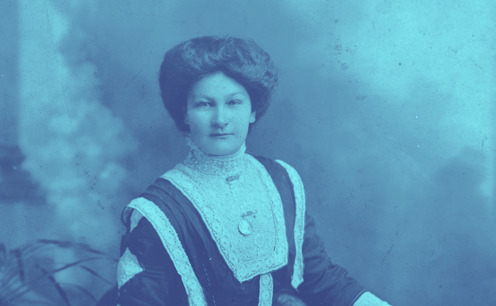In Restless Dolly Maunder, Kate Grenville recreates the enterprising life of an obscure historical figure
- Written by Susan Sheridan, Emeritus Professor, Flinders University

Dolly Maunder, born in 1881, is the sixth of seven children of a sheep-farming family outside Tamworth in northern New South Wales. Their lives are a relentless round of hard work, indoors and out, relieved only a by few brief years at the local one-teacher school.
Dolly thrives there – “you’re a quick study”, approves the teacher. She also takes note of Miss Murray, the teacher’s daughter, who runs her own school in a nearby village: “the only woman Dolly knew who wasn’t just at home all day, banging the stove door open and closed, heaving the wet sheets around on washday, milking the cow, and always a baby wailing from the crib in the corner”.
Dolly determines that she will escape the farm, become a teacher, and earn her own way. But her father has different ideas. “Over my dead body!” is his response when she asks his permission to sit the necessary exam: “no daughter of mine goes out to work.”
So Dolly must resign herself to years of labouring in the kitchen, the wash house and the dairy with her mother and sisters, while checking out the local talent with a view to the inevitable marriage, “those iron rails”.
But the men in whom she is interested have their own commitments, and Dolly’s desires are thwarted by barriers of class and religion. She must make do and marry Bert Russell, one of her father’s employees and her mother’s choice – a simple, good-looking, hardworking man, who is quietly intent on leaving behind the small-town shame of coming from a disreputable family.
And so a pattern is set – of frustrated attempts to shape and expand her own life, and making do with what she can get.
Review: Restless Dolly Maunder – Kate Grenville (Text Publishing)
Restless Dolly Maunder extends Kate Grenville’s longstanding fascination with the lives of obscure historical figures, most of them women. Across her career, she has been driven to imagine their lives in all their possibilities, in books ranging from her bicentennial tour de force Joan Makes History (1988), to the controversial The Secret River (2005), to her recent historical project on Elizabeth Macarthur, consisting of the novel A Room Made of Leaves (2020) and an edited collection of Macarthur’s letters.





